Part 2. Think Tactics acoording to Vectors
2.14. The Basis of Back-spin Rally
Here, the basics of the rally by Back-spin are described.
Back-spin rally is a technique that is learned in your introductory era of table tennis, but it is a technique that is learned when you have no certain knowledge and then it is not modified.
If you learn the precise technique, you can use it not only for connecting but also for attacking.
The input angle of your backspin swing is to rub against the opponent's one to be 90°.
By doing so, the ball is stable and can send a fast ball with a low trajectory to the opponent's court.
First, how to read the figures will be described.
- The figures show the backspin rally from the side of the table.
- The rubber you use is supposed to be the Inverted rubber.
- The red arrow indicates the direction and size of the racket's backspin swing speed. This swing-down speed is based on the swing-down speed in section 6.6.1 as "1.0", and is the same in all cases to compare the effects.
- The green arrow indicates the spin speed of the ball depending on the swing-down angle of your racket. The length of the arrow is the length shown by the ratio with the spin speed in section 6.6.1 as "1.0". Since the spin speed is proportional to the vertical stress of the racket, it is a value obtained by multiplying the swing-down angle of the racket by sin θ.
- The black arrow indicates the spin speed of the ball depending on the swing-down angle of opponent's racket. The length of the arrow is the length shown by the ratio with the spin speed in section 6.6.1 as "1.0". Since the spin speed is proportional to the vertical stress of the racket, it is a value obtained by multiplying the swing-down angle of the racket by sin θ.
2.14.1 When the opponent's Inverted makes a backspin at 45°up of the racket face
(A)Skillful Rally
Fig-6.6.1
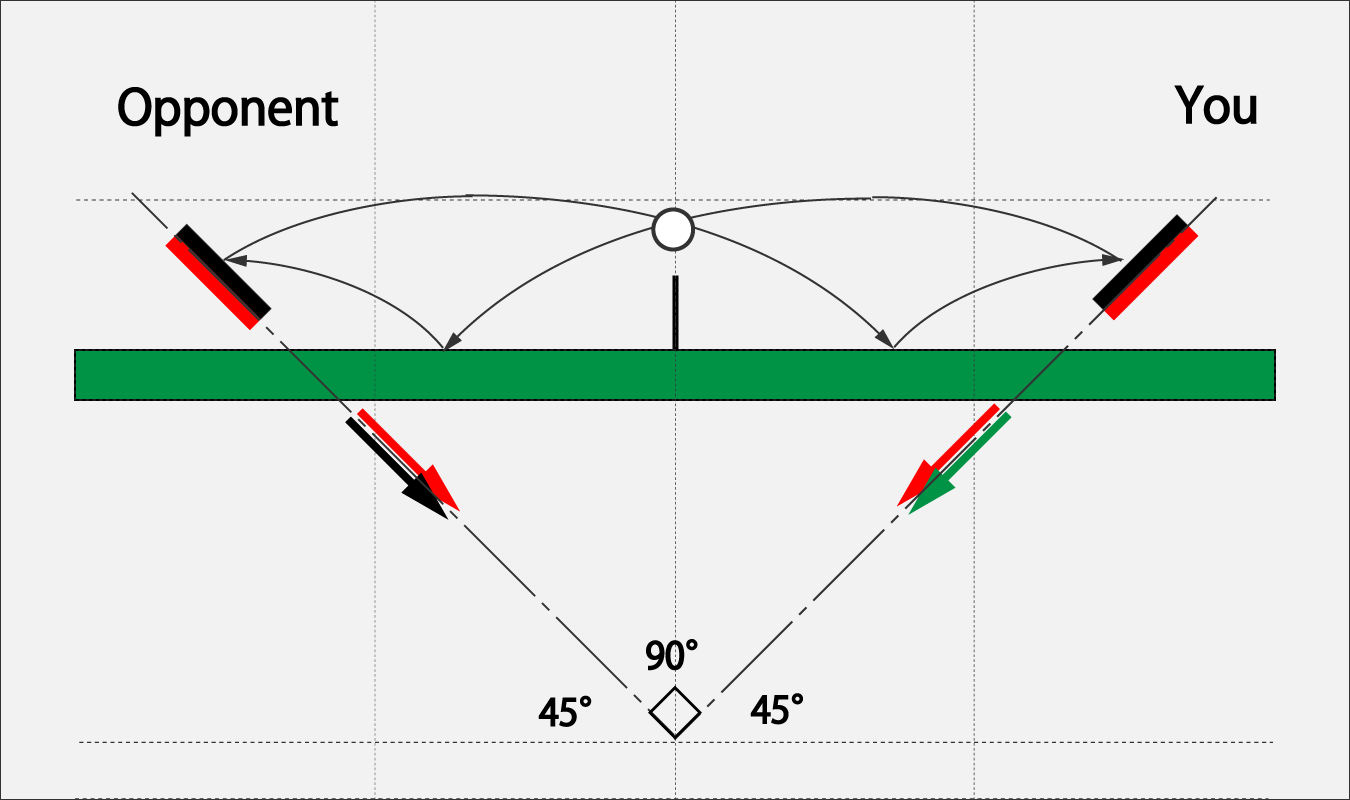
This figure shows the case where the opponent makes a back-spin at the angle of 45° and you return the back-spin at the angle of 45°. Your ball will have a low spin but will fly like the trajectory as your opponent and reach deep into your opponent's court.
2.14.2 When the opponent's Inverted makes a backspin with the racket face up
(A) Offensive and Skillfull Rally
Fig-6.6.2a
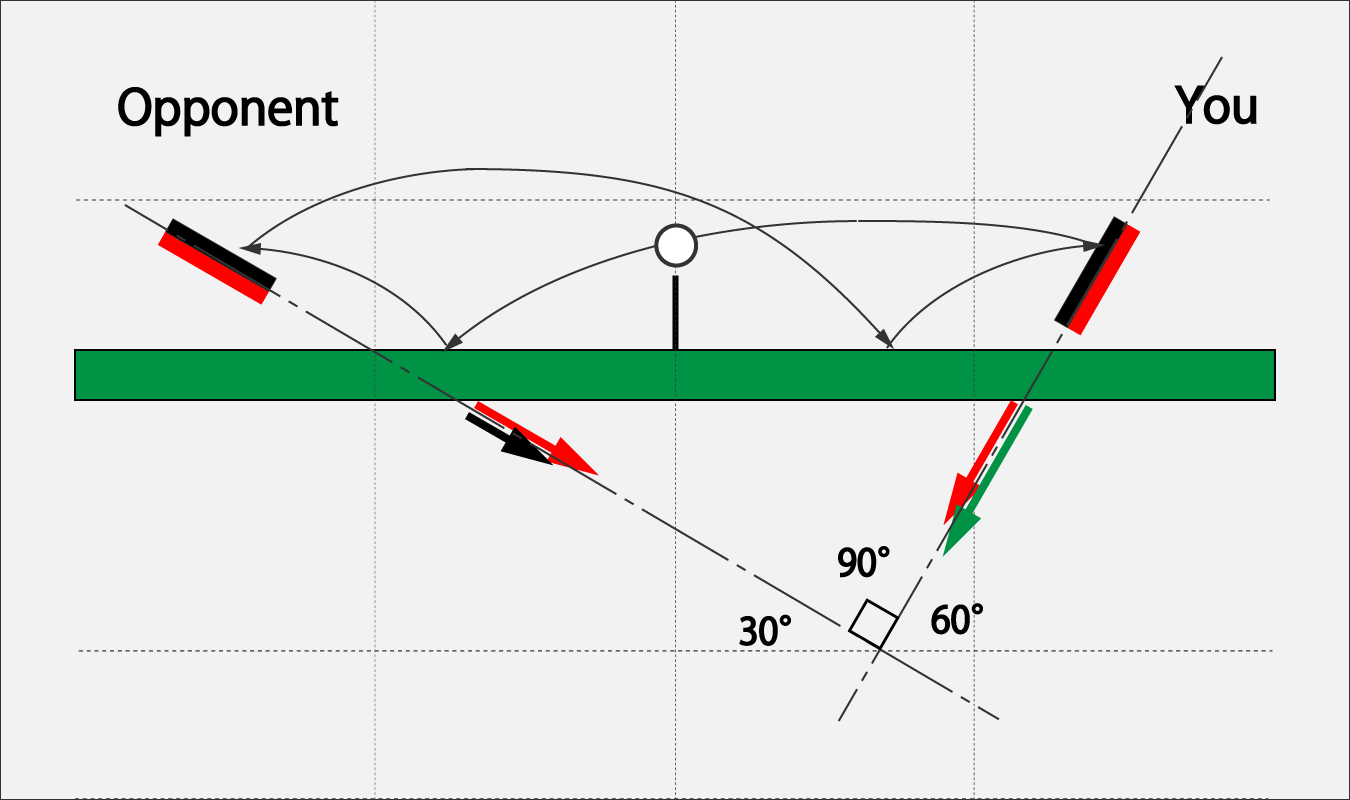
In this figure, the opponent make a backspin at the angle of 30° and you make a return of backspin at the angle of 60°. The opponent's spin speed is about 70% of the 45° angle. On the other hand, your speed is 122%. The difference is backspin of 52% and returns to the opponent.
It is important that the input angle of your backspin swing is to rub against the opponent's one to be 90°.
(B)Rally with a High Probability of Failure
Fig-6.6.2b
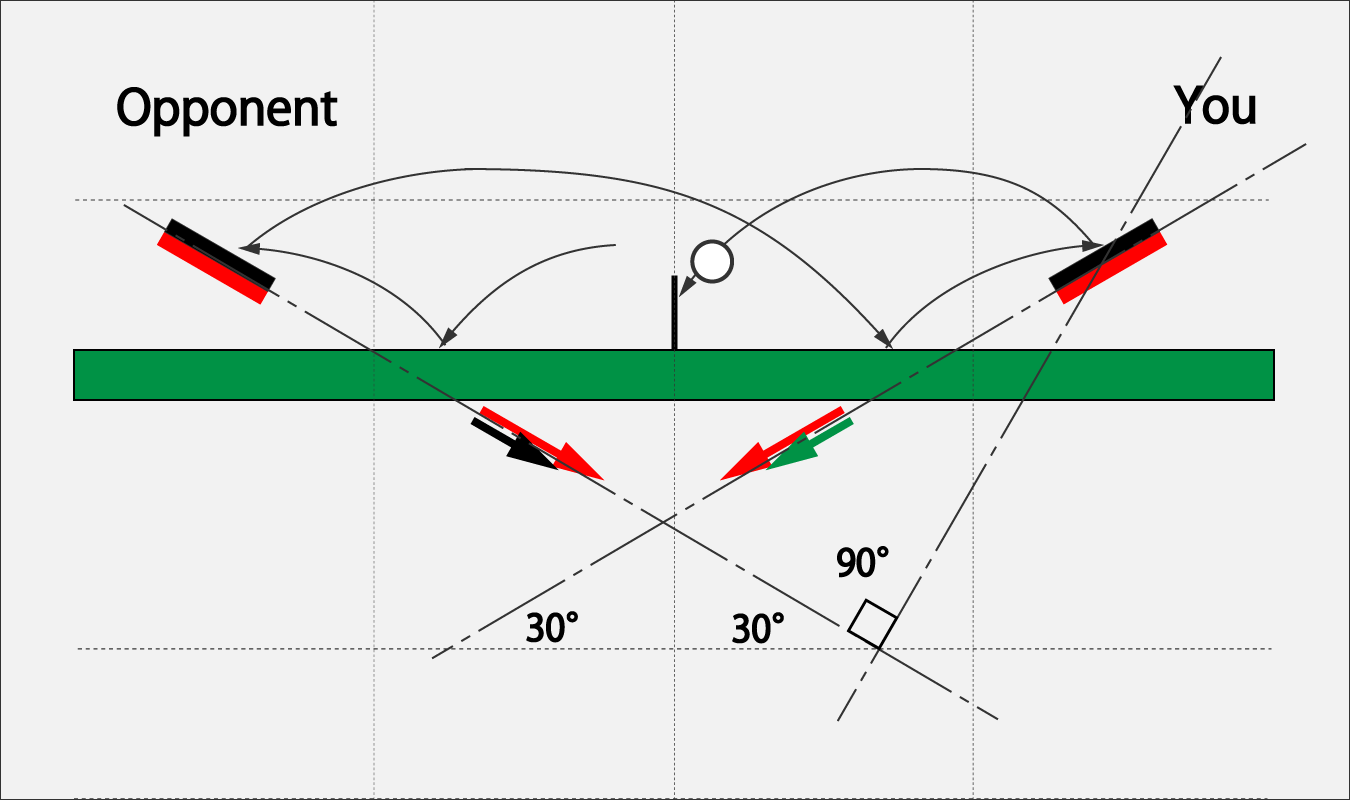
In this figure, the opponent make a backspin at the angle of 30° and you also make a return of backspin at the angle of 30°.
Since your racket is facing upwards, the ball will get caught in the net without keeping the flight distance, or the ball will float and become a type of ball that is easily attacked by the opponent.
2.14.3. When the opponent's Inverted makes a backspin with the racket face down
(A)Defensive and Skillful Rally
Fig-6.6.3a
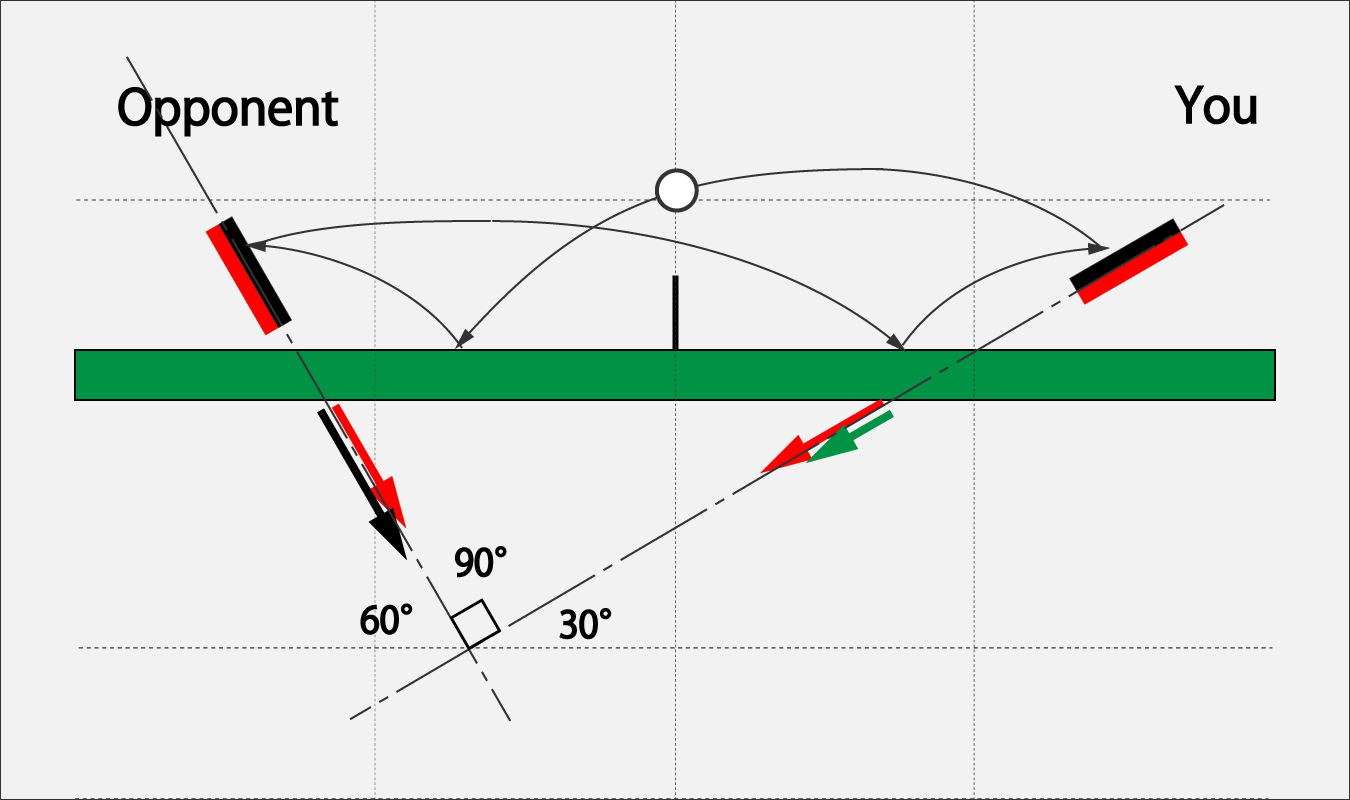
In this figure, the opponent make a backspin at the angle of 60° and you make a return of backspin at the angle of 30°.
The opponent's spin speed is about 122% compared to 45°. On the other hand, your spin speed is 70%. The difference of 52% changes to the downward momentum due to the rubber reaction forceand, but since the racket is facing upward, it does not get caught in the net and goes back deep into the opponent's coat.
It is important that the input angle of your backspin swing is to rub against the opponent's one to be 90°.
(B)Rally with a High Probability of Failure
Fig-6.6.3b
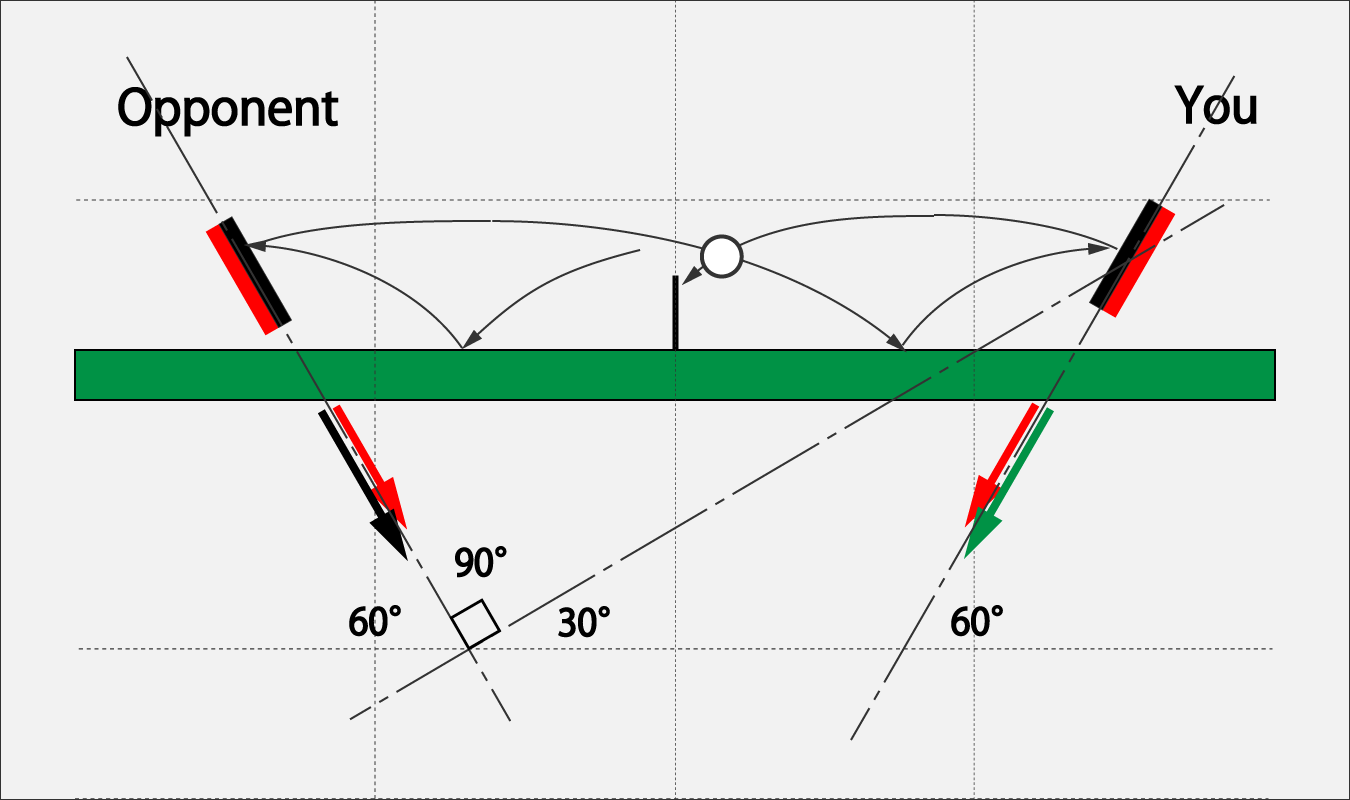
In this figure, the opponent make a backspin at the angle of 60° and you also make a return of backspin at the angle of 60°.
Since your racket is facing down, the ball gets caught in the net without keeping the distance.
2.14.4. When the opponent's Pips-out makes a backspin with the racket face up
The opponent's Pips-out has a smaller spin coefficient than your Inverted, so the spin becomes smaller, so it is similar to Section 2.14.2 "When the opponent's Inverted makes a backspin with the racket face up". Therefore, you can make an aggressive backspin with the racket facing down.
2.14.5. When the opponent's Sticky makes a backspin with the racket face up
When the opponent's Sticky rubber has a sufficiently large spin coefficient compared to your Inverted rubber, the difference in spin between you and your opponent causes the ball to work downwards and catch on the net. To avoid that, your swing resembles Section 2.14.3, "When the opponent's Inverted rubber makes a backspin with your face down." Therefore, you can make a diffensive backspin with the racket facing up.